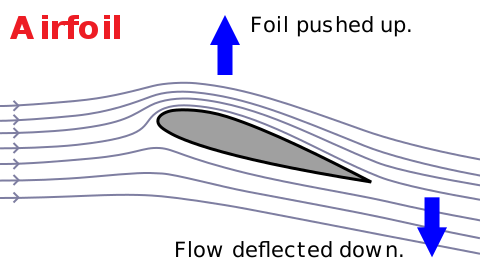In aviation, lift is the force that allows an aircraft to rise off the ground and remain in the air. It is created by the movement of air over the aircraft's wings. The basic principle behind lift is a fundamental concept in aerodynamics and is explained by Bernoulli’s Principle and Newton's Third Law of Motion. Understanding how lift works is crucial for every pilot, as it plays a major role in takeoffs, landings, and general flight stability.
How Lift is Generated
Lift is produced primarily by the wings of the aircraft, which are designed with a special shape called an airfoil. The airfoil shape features a curved top and a flatter bottom. As air flows over the wing, the air moves faster over the top of the wing than beneath it. This difference in airflow speeds results in lower pressure above the wing and higher pressure below the wing, creating an upward force that we call lift. This difference in pressure can be attributed to Bernoulli’s Principle, which states that as the speed of a fluid (like air) increases, its pressure decreases. The faster-moving air over the top of the wing creates a lower pressure area, while the slower-moving air beneath the wing creates higher pressure. The net result is an upward force that lifts the aircraft.
Newton's Third Law also plays a role. As the aircraft pushes air downward (due to the angle of the wing), the equal and opposite reaction is an upward force that lifts the plane.

Factors Affecting Lift
Angle of Attack: The angle of attack is the angle between the aircraft's wing and the oncoming airflow. A higher angle of attack generally increases lift, but if the angle becomes too steep, the airflow over the wing can become turbulent, causing a stall.
Wing Area: The larger the surface area of the wing, the more air the wing can interact with, which increases the lift produced. This is why large aircraft have larger wings than smaller planes.
Airspeed: Faster airspeed increases the amount of air flowing over the wings, thus increasing lift. This is why aircraft need to achieve a certain speed during takeoff to generate enough lift to become airborne.
Air Density: Lift is also affected by the density of the air, which is influenced by factors like altitude and temperature. Higher altitudes have less dense air, meaning the aircraft needs to travel faster to generate the same amount of lift. Warm air is less dense than cold air, which also affects the aircraft’s ability to generate lift.
Summary
Lift is an essential force in flight, and understanding how it works is fundamental for pilots. By manipulating factors like the angle of attack, airspeed, and wing design, pilots can control lift and ensure safe and efficient flight.
Test your knowledge
{LOADQUIZ ["id": 3, "container": "container-name-1"]}
Learn More - the Basic Aeronautical Knowledge Certificate Programme, is an effective way to demonstrate your knowledge and passion for aviation.
#aviationenglishasia #aviationenglish #BAK #basicaeronauticalknowledge #aviationtheory #flighttraining #pilottraining #hkaviation #vhhh #aviation #icaoenglish #pilot #atco #flying #piloting #studentpilot #Pilot #見習機師 #CadetPilot #機師英語要求 #ICAO英語 #ICAOtest #cadetpilotprogramme #icaoenglishtest #studentpilot #futurepilots #generalaviation




.jpg)